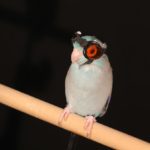News, How lasers and parrots can aid flying robot designs
Scientists are using lasers and a goggle-wearing parrot for the design of flying robots of the future.
A barely visible fog hangs in the air in a California laboratory, illuminated by a laser. And through it flies a parrot, outfitted with a pair of tiny, red-tinted goggles to protect its eyes.
As the bird flaps its way through the water particles, its wings generate disruptive waves, tracing patterns that help scientists understand how animals fly.
In a new study, a team of scientists measured and analyzed the particle trails that were produced by the goggle-wearing parrot’s test flights, and showed that previous computer models of wing movement aren’t as accurate as they once thought. This new perspective on flight dynamics could inform future wing designs in autonomous flying robots, according to the study authors.
Learn about our two Decals!
 Click here to find out more about our Fall Bioinspired Design Decal and our Spring Bioinspired Design in Action Decal – ALL MAJORS are welcome.
Click here to find out more about our Fall Bioinspired Design Decal and our Spring Bioinspired Design in Action Decal – ALL MAJORS are welcome.Berkeley BioDesign Community
 Click here to learn about the BioD: Bio-Inspired Design @ Berkeley student organization or here to signup for more info.
Click here to learn about the BioD: Bio-Inspired Design @ Berkeley student organization or here to signup for more info.Search
Student Login




I imagine that the neurological circuits underlying these processes are governed by both 2d spacing maps with their brains as…
to reduce the impact of car accidents, it may be possible to study the force diverting physics of cockroaches to…
you see this type of head-bobbing stability in many avian creatures related to pigeons like chickens. the head ability to…
not like they taught horses how to run! this is an example of convergent evolution where both sea creatures and…
The brain functions in a similar way with neuronal connections. our brains are able to utilize the multiplicity of connections…